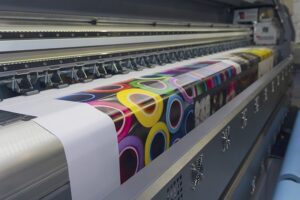Exploring the World of Non-QM Lending: A Comprehensive Guide
Christine Dodge December 2, 2023
What is Non-QM Lending?
Non-QM loans are not inherently risky; rather, they cater to borrowers who may not meet QM criteria due to reasons such as:
Non-traditional income sources: Borrowers with income from sources like self-employment, investments, or rental properties, which may not fit the standard QM mold.
Credit issues: Borrowers with recent credit blemishes or complex credit histories that do not align with QM’s strict credit requirements.
High debt-to-income (DTI) ratios: Borrowers with high DTI ratios that exceed the QM limits.
Jumbo loans: Non-QM lending also includes loans that exceed the conforming loan limits set by government-sponsored enterprises like Fannie Mae and Freddie Mac.
How Does Non-QM Lending Work?
Here are some key features of Non-QM loans:
Alternative documentation: Non-QM lenders may accept alternative forms of income documentation, such as bank statements, asset-based income, or even stated income loans (where the borrower’s income is stated but not verified).
Flexible credit requirements: Non-QM loans may be available to borrowers with lower credit scores or those with recent credit events, like bankruptcies or foreclosures.
Higher DTI ratios: Borrowers with higher DTI ratios may still qualify for Non-QM loans, as these loans do not adhere to the strict DTI limits imposed on QM loans.
Interest-only options: Some Non-QM loans offer interest-only payment options, which can be beneficial for certain borrowers but may come with higher long-term costs.
The Benefits and Drawbacks of Non-QM Lending
Flexibility: These loans cater to a wide range of financial situations, making them suitable for self-employed individuals, investors, and those with unique financial profiles.
Competitive rates: While Non-QM loans may have slightly higher interest rates compared to QM loans, they can still offer competitive terms.
Drawbacks:
Potential for abuse: The flexibility in underwriting standards can lead to abuse if not properly managed, reminiscent of the pre-2008 subprime mortgage crisis.
Limited availability: Not all lenders offer Non-QM loans, and the availability of these loans can vary depending on the lending market and economic conditions.
Non-QM lending serves as a valuable alternative for borrowers who do not fit the rigid criteria of Qualified Mortgages. While it offers opportunities for homeownership and financial flexibility, it’s crucial for borrowers to carefully consider their options and work with reputable lenders who adhere to responsible lending practices. As the mortgage industry continues to evolve, Non-QM lending remains a relevant and important option for diverse borrowers seeking the American dream of homeownership.








